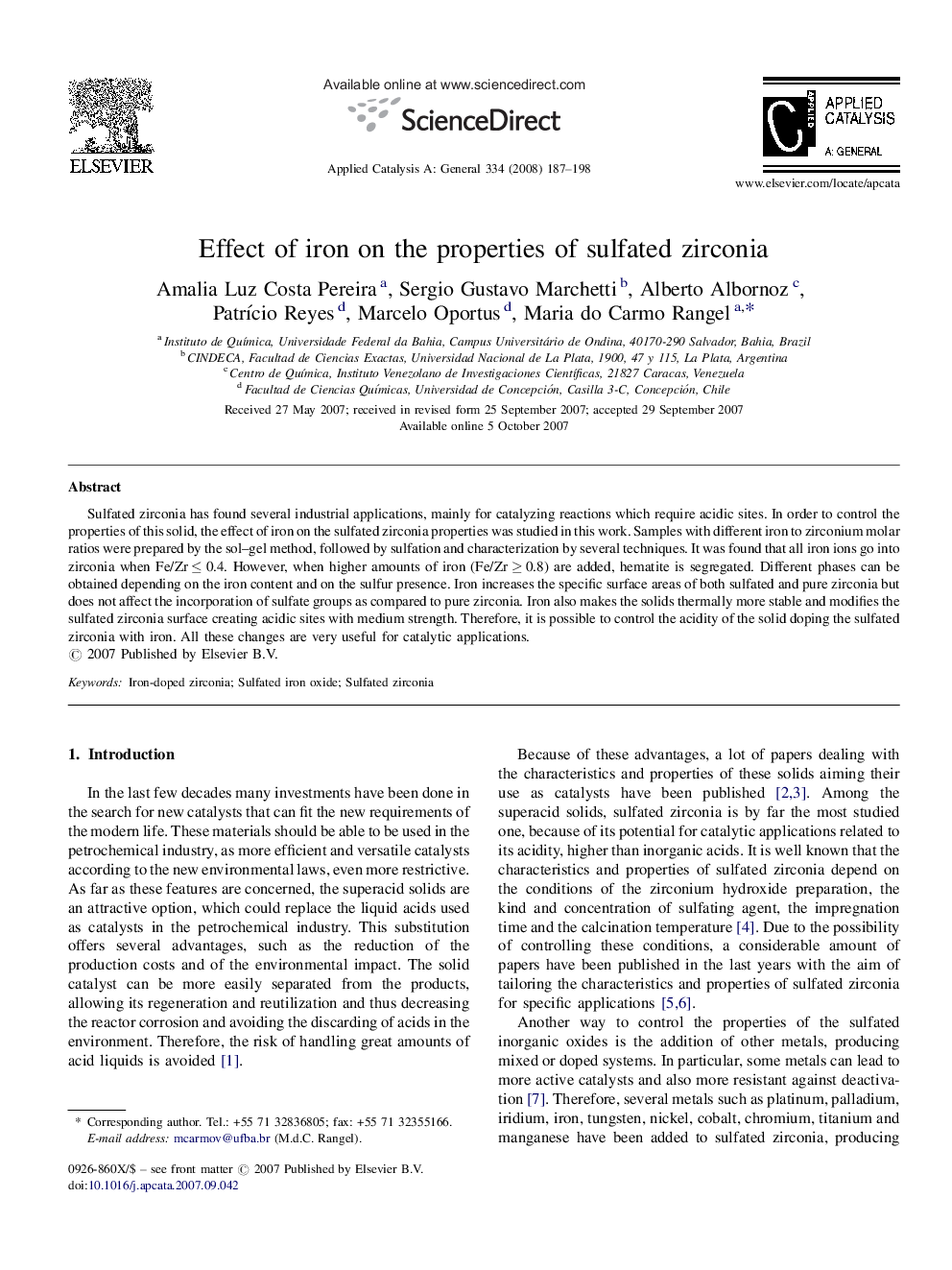| Article ID | Journal | Published Year | Pages | File Type |
|---|---|---|---|---|
| 43207 | Applied Catalysis A: General | 2008 | 12 Pages |
Sulfated zirconia has found several industrial applications, mainly for catalyzing reactions which require acidic sites. In order to control the properties of this solid, the effect of iron on the sulfated zirconia properties was studied in this work. Samples with different iron to zirconium molar ratios were prepared by the sol–gel method, followed by sulfation and characterization by several techniques. It was found that all iron ions go into zirconia when Fe/Zr ≤ 0.4. However, when higher amounts of iron (Fe/Zr ≥ 0.8) are added, hematite is segregated. Different phases can be obtained depending on the iron content and on the sulfur presence. Iron increases the specific surface areas of both sulfated and pure zirconia but does not affect the incorporation of sulfate groups as compared to pure zirconia. Iron also makes the solids thermally more stable and modifies the sulfated zirconia surface creating acidic sites with medium strength. Therefore, it is possible to control the acidity of the solid doping the sulfated zirconia with iron. All these changes are very useful for catalytic applications.
Graphical abstractThe effect of iron on sulfated zirconia was studied in this work. When Fe/Zr ≤ 0.4 all iron ions go into zirconia but higher amounts (Fe/Zr ≥ 0.8) leads to segregation of hematite. Iron increases the specific surface areas, makes the solids thermally more stable and creates acidic sites with medium strength. All these changes are very useful for catalytic applications.Figure optionsDownload full-size imageDownload as PowerPoint slide
